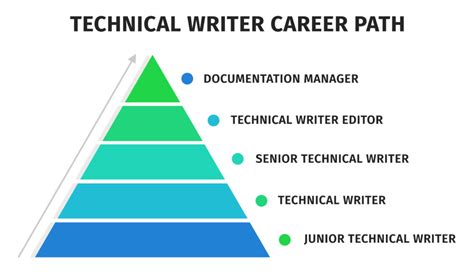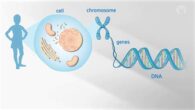Are you a writer with a passion for technology and a knack for simplifying complex information? If so, technical writing may be the perfect niche for you. In this blog post, we will explore the fascinating field of technical writing and all that it encompasses. From understanding the basics of technical writing to navigating the tools and software used in the industry, we will cover it all. We will also delve into the importance of effective communication skills, the art of research and information gathering, and the various genres of technical writing. Whether you’re interested in crafting user manuals, creating engaging blog posts, or collaborating with subject matter experts, there’s something for everyone in this diverse and ever-evolving field. Join us as we embark on this journey to master the art of technical writing and continuously improve our skills in this dynamic profession.
Table of Contents
Understanding the Basics of Technical Writing
Technical writing is a form of professional communication used in various fields such as engineering, computer science, and healthcare. It involves translating complex technical concepts into clear and concise language that can be easily understood by the target audience.
Understanding the audience’s needs and knowledge level is crucial in technical writing, as it helps writers tailor their communication to effectively convey information. This involves conducting thorough research and analysis to determine the appropriate level of detail and technical jargon to use.
In addition to understanding the audience, clarity and precision are also essential components of technical writing. Writers must be able to convey information in a straightforward manner, using the most precise language possible to avoid any ambiguity or confusion.
Lastly, organization and structure play a significant role in technical writing. Documents must be logically organized and structured to guide the reader through the information in a seamless manner. This includes the use of headings, subheadings, and bullet points to break down complex information into digestible chunks.
Developing Effective Communication Skills
Effective communication skills are essential for a technical writer in order to convey complex information in a clear and understandable manner. Developing these skills involves not only being proficient in the written word, but also in verbal and nonverbal communication. This includes the ability to actively listen, ask clarifying questions, and effectively convey ideas to diverse audiences.
One important aspect of developing effective communication skills is being able to adapt to different communication styles. This means understanding how to communicate with technical experts, stakeholders, and end users in a way that is clear and concise. Developing this flexibility allows technical writers to tailor their communication to the specific needs and knowledge levels of their audience.
Furthermore, developing effective communication skills also involves being able to provide and receive constructive feedback. This can help technical writers improve their writing and ensure that their communication effectively meets the needs of their audience. Developing the ability to give and receive feedback can lead to continuous improvement as a technical writer.
In conclusion, developing effective communication skills is crucial for technical writers to succeed in their role. By developing active listening, adaptability, and the ability to give and receive feedback, technical writers can effectively communicate complex technical information to a variety of audiences.
Exploring Different Technical Writing Genres
Technical writing is a diverse field that encompasses various types of documents and genres. One of the key aspects of becoming a successful technical writer is to understand the different genres and their unique characteristics. From instructional manuals to white papers, technical writers must be adept at navigating through these genres to effectively communicate complex information to their audience.
One of the most common technical writing genres is instructional manuals. These documents are designed to provide step-by-step instructions on how to use a product or service. Technical writers who are skilled in this genre must possess a strong understanding of the product or service they are documenting, as well as the ability to break down complex processes into clear and concise steps.
Another important genre in technical writing is white papers. These documents are typically used to present a complex issue and provide a solution. White papers require extensive research and a deep understanding of the subject matter. Technical writers who excel in this genre must be able to craft compelling arguments and present data in a clear and persuasive manner.
Furthermore, technical writers may also need to delve into the world of user guides and online help systems. These genres require a keen understanding of user experience and the ability to create clear and engaging content that guides the user through a product or software. Mastering these genres is essential for any technical writer looking to excel in the field.
Navigating the Tools and Software Used in Technical Writing
As a technical writer, it is crucial to be familiar with the various tools and software used in the field. Technical writing involves not only creating clear and concise documentation but also utilizing the right tools to enhance the overall quality of the content produced.
One of the most commonly used tools in technical writing is Microsoft Word, which provides a range of features that are essential for creating and formatting technical documents. From style guides to page layout options, Microsoft Word simplifies the writing process and allows technical writers to focus on the content itself.
Another important tool for technical writers is MadCap Flare, a specialized software designed for creating, managing, and publishing technical documentation. MadCap Flare offers a wide range of features, including single-source publishing, content reusability, and advanced formatting options, making it an invaluable asset for any technical writer.
In addition to these tools, technical writers may also work with Adobe FrameMaker, RoboHelp, and Google Docs, among other software options. Each of these tools has its own unique set of features and capabilities, and it is important for technical writers to be well-versed in using them to meet the specific requirements of their projects.
Mastering the Art of Research and Information Gathering
Research and information gathering are crucial skills for any technical writer to master. The ability to effectively find, evaluate, and synthesize information is essential for creating high-quality technical documentation.
One key aspect of mastering research and information gathering is developing strong critical thinking skills. This involves being able to analyze and interpret different sources of information, and to identify key insights and conclusions.
Additionally, technical writers must be proficient in using search engines, databases, and other research tools to locate relevant information. Understanding advanced search operators and filters can make the process more efficient and productive.
Continuous improvement is also important in research and information gathering. As new technologies and information sources emerge, technical writers must stay updated with the latest trends and tools in order to produce accurate and up-to-date documentation.
Crafting Clear and Concise Technical Documentation
Crafting Clear and Concise Technical Documentation
When it comes to crafting clear and concise technical documentation, it is essential to understand the importance of clarity and simplicity. Clear technical documentation can make a significant impact on the overall user experience. Whether you are creating user manuals, software guides, or product documentation, the clarity of your content directly affects how users interact with the information.
One of the key aspects of crafting clear and concise technical documentation is understanding your audience. It is important to identify the level of expertise of your readers and tailor the content accordingly. Using simple language and avoiding unnecessary jargon can make the documentation more accessible and easy to understand for a wider range of users.
Another important factor to consider when crafting clear and concise technical documentation is the organization of information. A well-structured document helps users navigate through the content efficiently. Using headings, subheadings, and bullet points can break down complex information into digestible chunks, making it easier for users to find the information they need.
Lastly, crafting clear and concise technical documentation requires effective editing and proofreading. It is essential to review the content for grammatical errors, spelling mistakes, and unclear phrasing. Getting feedback from peers or stakeholders can also help identify areas for improvement and ensure that the documentation is as clear and concise as possible.
Enhancing User Experience through User Manuals and Guides
When it comes to enhancing user experience through user manuals and guides, it’s important to consider the needs and preferences of the end-users. A well-written and well-organized user manual or guide can make a significant impact on how users perceive and interact with a product or service. By understanding the user’s perspective and anticipating their questions and concerns, technical writers can create user documentation that is not only informative but also user-friendly.
One of the key aspects of enhancing user experience through user manuals and guides is clarity. The language used should be straightforward and free from technical jargon that might be confusing to the average user. Additionally, visual aids such as diagrams, screenshots, and step-by-step instructions can greatly improve the usability of the documentation.
Another important factor to consider is accessibility. User manuals and guides should be easily accessible and searchable, whether in digital or hard copy format. This ensures that users can quickly find the information they need, when they need it.
Finally, usability testing is essential in ensuring that user manuals and guides are effective in enhancing user experience. By gathering feedback from actual users, technical writers can identify any areas for improvement and make adjustments accordingly.
Creating Engaging and Informative Technical Blog Posts
When it comes to creating engaging and informative technical blog posts, it’s important to consider your audience and their needs. Technical writing in a blog format can be a challenge, as it requires a balance of technical detail and readability. One of the first steps in creating engaging technical blog posts is to understand your target audience. Who will be reading your blog? What are their interests and knowledge levels? Understanding these factors will help you tailor your content to be both engaging and informative.
Another important aspect of creating technical blog posts is to research your topic thoroughly. This involves gathering information from reliable sources, understanding the technical details, and presenting the information in a clear and concise manner. Your goal is to provide valuable content that adds to the reader’s knowledge base, so thorough research and fact-checking are essential.
Once you have a good understanding of your audience and have thoroughly researched your topic, it’s time to craft engaging content. This can be done by using a mix of informative text, visuals, and interactive elements to keep your readers engaged. Visual aids such as charts, diagrams, and screenshots can be used to enhance the understanding of technical concepts.
Finally, to ensure that your technical blog posts are engaging and informative, it’s important to solicit feedback from your audience. Encourage readers to leave comments, ask questions, and provide suggestions for future topics. This not only creates engagement but also helps you understand what your audience is looking for in terms of information and engagement.
Collaborating with Subject Matter Experts and Stakeholders
Collaborating with subject matter experts and stakeholders is an essential aspect of technical writing. Subject matter experts possess in-depth knowledge and expertise in a specific field or industry, making them valuable resources for gathering accurate and relevant information. By working closely with these experts, technical writers can ensure the accuracy and authenticity of their documentation.
Stakeholders, on the other hand, play a crucial role in providing insights and feedback on the document’s usability and effectiveness. Engaging with stakeholders throughout the writing process is key to understanding their needs and expectations, ultimately leading to the creation of documentation that meets their requirements.
Effective collaboration with both subject matter experts and stakeholders involves clear communication, active listening, and the ability to incorporate feedback into the documentation. It is essential for technical writers to establish strong relationships with these individuals to facilitate a smooth and efficient writing process.
Ultimately, by collaborating with subject matter experts and stakeholders, technical writers can ensure that their documentation is accurate, relevant, and tailored to meet the needs of their target audience.
Continuous Improvement as a Technical Writer
As a technical writer, it is important to understand the value of continuous improvement in your work. This involves consistently seeking out opportunities to enhance your skills, learn about new tools and technologies, and stay updated on industry best practices.
One way to achieve continuous improvement as a technical writer is by actively seeking feedback from your peers and supervisors. Constructive feedback can help you identify areas for improvement and provide valuable insights into how you can enhance your writing style, organizational abilities, and overall effectiveness as a communicator.
Additionally, taking the time to participate in professional development opportunities such as workshops, seminars, and online courses can contribute significantly to your growth as a technical writer. These learning experiences can expose you to new writing techniques, industry trends, and advanced tools that can elevate your work to the next level.
It is also important to engage in self-reflection and regularly assess your work to identify areas where you can improve. This may involve analyzing your writing processes, seeking out new research methodologies, or exploring new approaches to organizing and presenting technical information in a clear and concise manner.






